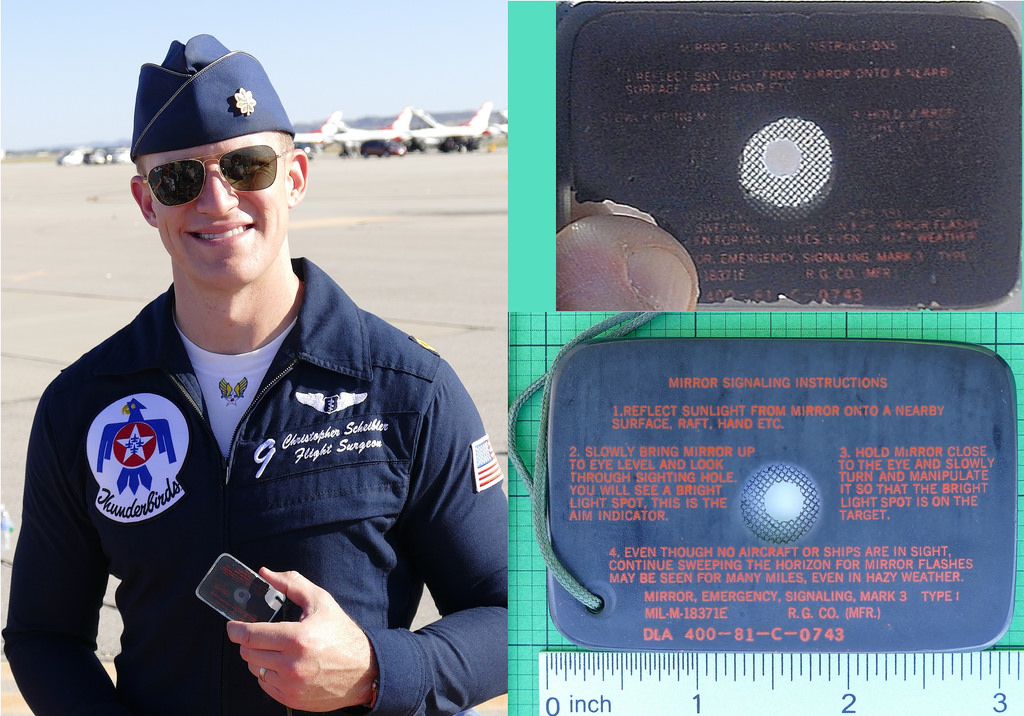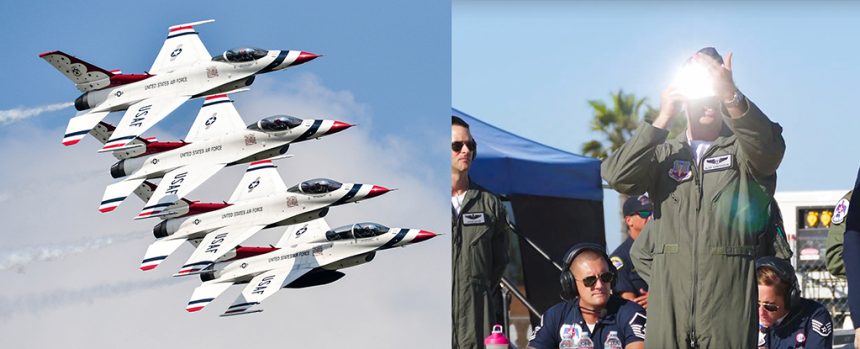The U.S. Air Force demo team rely on a signal mirror that provides a fixed reference point to the formation during the display.
The video below is particularly interesting. It was filmed in 2016 and shows the then current and future USAF Thunderbird 9 pilots using their signal mirrors to signal Thunderbird 1 and mark the show center to the team.
The footage was filmed at Huntington Beach, CA, on Oct. 20, 2016, during the practice session for the weekend airshow.
Thunderbird 9 is the flight surgeon for the USAF Thunderbird air demonstration team. On the right hand side is Maj. (Dr.) Christopher Scheibler, Thunderbird 9 for 2015-2016; on the left is Capt. (Dr.) William Goncharow, who would be Thunderbird 9 for 2017-2018.
Obviously, TB1 can’t see the very small mirror itself, whose size is that of a business card. What TB1 sees is the concentrated ray of sunlight reflected by the mirror – 4,000,000+ candlepower of it – more than 20 times brighter than an air traffic control signal light gun.

Even though to the eyes of a spectator a demo team’s display overhead an airport does not change much from the one which takes place over another airfield or the coastline of a beach resort or a lake, the way the team flies may differ significantly depending on the “environment” in which the aerobatic display is executed. The different topographic features of the place where the air show takes place, and the surrounding landscape may, in fact, require the adoption of specific solutions in order to maintain standard distances and for the correct evaluation of terrain separation under peculiar light conditions.
Familiarisation with the landscape and evaluating the display arena are the purposes of the preparation flight which precedes every airshow display. In the case of displays flown over land, the terrain usually offers a multitude of fixed references which assist in the perception of speed, travelled airspace and altitude, such as crop lines, fields, roads, railways, and water courses. Over the water, however, it is necessary to utilise buoys or small boats which, besides delineating the display area in respect to a crowd line which is frequently extremely extended, allows the accurate determination of the display line. This line constitutes the reference for the pilots for the safe execution of all the manoeuvres. Whereever the display takes place, the show center is one of the most important reference points for the team.
By the way, the Blue Angels demo team use the same mirror.
Top image: right screenshot from rafowell video








